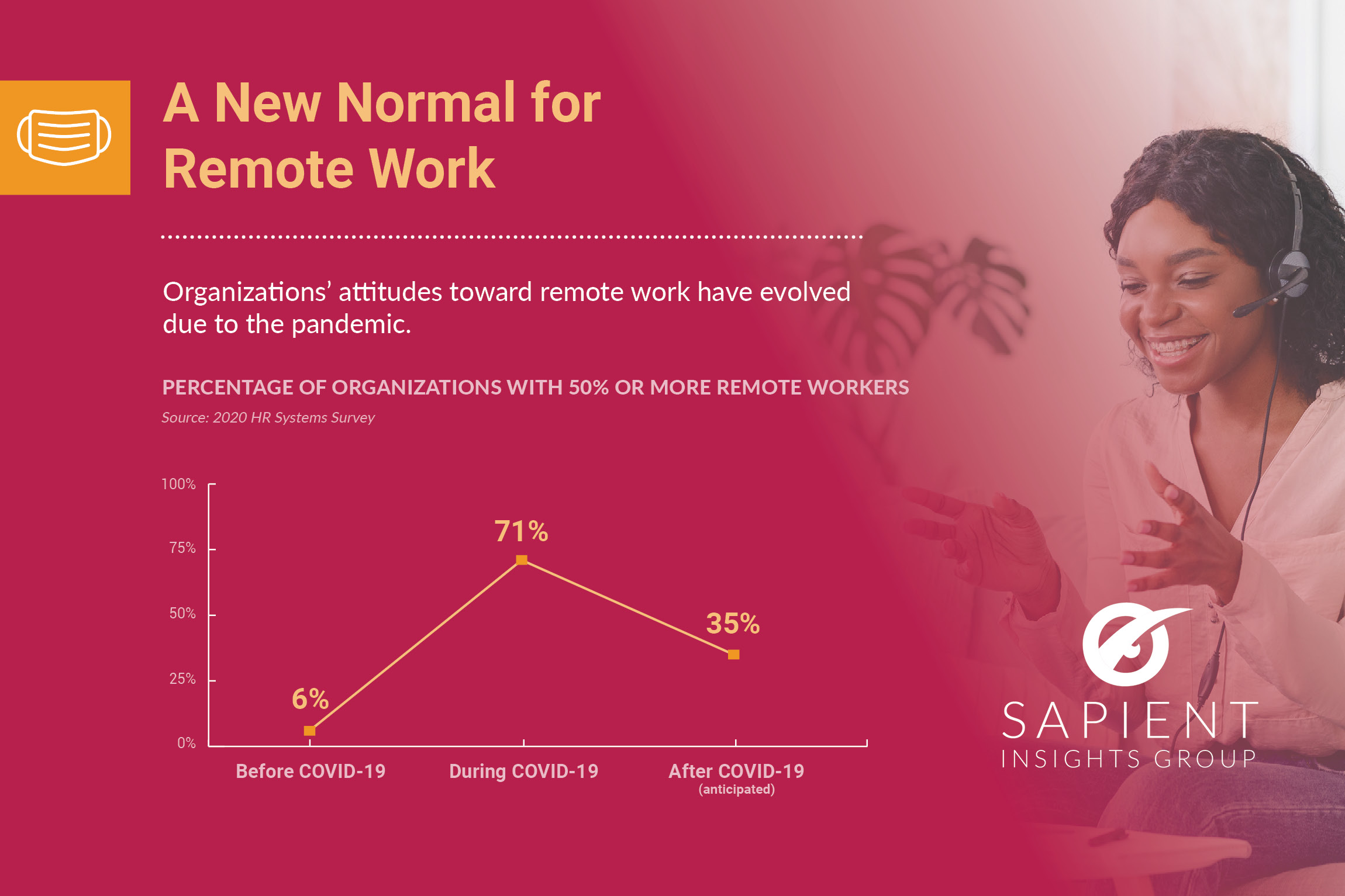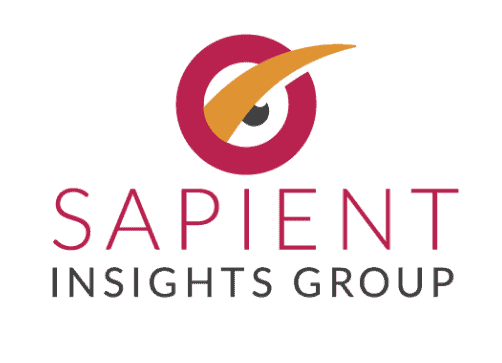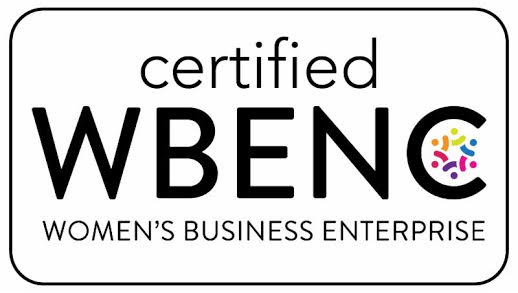Remote working is not a new concept, it has been a part of many companies’ larger workforce planning strategy pre the 1980s. According to the US Census, between 2000 and 2010, people who worked at least one day at home per week increased by over 4 million to 35%. The population of occasional remote workers went from 9.2 million to 13.4 million during this decade. One could argue that we have been planning for and anticipating more remote working as a foundational pillar of the Workforce of the Future. Many would say that remote work is no longer an employee perk, but rather a business strategy. Why then, are we still struggling to accept that this is a temporary situation? Why does it seem we had not thought through the employee experience of working from home full-time?
According to the data from our Sapient Insights 2020 / 2021 Annual HR Systems survey, 35% of the more than 2000 participating organizations expect to have at least 50% or more of their employees continue in remote working arrangements even after the COVID-19 pandemic is resolved.
 Which means it’s probably time for all of us to stop waiting for “things to get back to normal” and treating our current work situations as temporary. We must start speaking directly with employees about what they need to be successful in 2021 recognizing that support will likely cross both their work and home lives in new and unfamiliar ways.
Which means it’s probably time for all of us to stop waiting for “things to get back to normal” and treating our current work situations as temporary. We must start speaking directly with employees about what they need to be successful in 2021 recognizing that support will likely cross both their work and home lives in new and unfamiliar ways.
According to Gartner’s 2020 ReimagineHR Employee Survey, employers that support employees with their life experiences see a 23% increase in the number of employees reporting better mental health and a 17% increase in the number of employees reporting better physical health.
There is also a real benefit to employers, as they are seeing a 21% increase in the number of high performers compared to organizations that don’t provide the same degree of support to their employees.
Here are three areas where providing support will pay dividends for you and your teams.
Take a more holistic view of employee wellness. This would include introducing new or expanded programs related to mental health, elder care, preventing burnout, improving sleep, and financial wellness. Any programs that are implemented or expanded should also consider that the needs of your employee population may be different by demographic groups.
For example, when thinking about what wellness programs may be of most benefit to your employees, consider the following:
- The Center for American Progress reports that Black Americans make up about 13% of the U.S. population, yet hold less than 3% of the country’s wealth, creating much more financial stress and worry for how to weather uncertainty of unemployment and an economic crisis; and
- Women are disproportionately struggling with the impossible demands of balancing childcare, homeschooling and household duties, while also working full- or part-time.
Start by looking at what employees really want and need to determine how to embed more holistic programs into your existing initiatives.
Create opportunities for employees to engage with others in the organization in meaningful conversations that matter to them personally. A large majority of employees are expecting the organizations they work for to be a voice for inspiring positive social change in the world. According to Edelman’s Trust Barometer 86% of employees expect their CEOs to publicly speak out about societal challenges And many employees want to be a part of the conversation for how to make change happen.
Some of the most progressive employers are hosting curated conversation events that employees can voluntarily attend. These discussions are designed to equip attendees with the knowledge and courage to discuss difficult and socially relevant topics with their colleagues and build more authentic, open relationships with their coworkers. Examples of conversations series include: Bridging the Racial Divide, Ageism at Work, Belonging, The Voice of Women, Allyship, LGBTQ+ at Work, Understanding Race, Common Ground, and Reckoning with Racial Injustice.
For the enabling platform, organizations are using tech startups like Civic Dinners, who have designed a format that avoids debate or dominant voices, and instead encourages listening and understanding of different perspectives.
At Sapient Insights, we have leveraged virtual focus group platforms like Remesh to host listening sessions with our clients’ employees and leaders on these socially relevant topics providing employees an opportunity to crowdsource ideas and solutions.
Career development. I’ve heard from several people in the early to mid-level stages of their careers who feel that not having face-to-face access to senior team members and leaders in their organizations is limiting the coaching, mentoring and/or sponsorship they are receiving. And they question the longer-term impact this may have for them, as these activities typically have provided access to high profile project assignments, developmental coaching, informal mentorship, etc. that can lead to promotions and other career defining moments.
Employees still want those opportunities to expand their networks, as well as to grow and advance their careers. This means leaders have to be intentional about providing those same types of networking, mentorship, and career coaching opportunities employees had while working in the office. The question is how to do it in our current remote world and in a time where Zoom fatigue is real.
If your company already offers a mentorship program, it’s important to keep it going. Ensuring that mentors and mentees continue to find time to connect, even if it’s for shorter, more focused conversations.
Here’s a case study that shows promise for using technology to remotely deliver one-on-one peer coaching at Zillow, who redesigned their processes for how they support and develop people managers.
Some organizations are creating small group opportunities for employees to connect with executive leaders through virtual “fireside chats”. And leaders in other companies are making personal calls to reach out and thank employees for their efforts and ask them directly what support they need to be successful in 2021.
There are also success stories of teams that have standing 15-minute informal calls where people dial in for virtual water-cooler chats.
With 2021 well underway, providing employees the support they need will be key to keeping them motivated and performing at their best.


